
- Weill Cornell Medicine


Slips, Trips, and Falls: Understanding, Preventing, and Mitigating Risks
By Gian Joseph, Safety Advisor
As we enter the rainy and cold season, we face several risks , which include slips , trips, and fall s in our day-to-day activities. It is important t o be aware of hazards around us and learn how to properly identify and assess any risks with each step.
Slips, trips, and falls (STFs) are common accidents that can lead to severe injuries. These incidents occur in various settings, from homes and workplaces to public spaces , and i t is essential to understand the causes, consequences, and , most importantly, strategies for prevention and mitigation.
1. Understanding the Dynamics of STFs. STFs are caused by the following .
Insu fficient friction between the shoe and the walking surface. Common causes include wet or greasy floors, spills, and loose debris (Slip and Fall Accidents, 2021).
When a person's foot collides with an object or an uneven surface, it caus es them to lose balance. Typical trip hazards include cluttered walkways, electrical cords, uneven flooring, and damaged or upturned mats (Slip and Fall Accidents, 2021).
2. The Impact of STFs
Slips, trips, and falls have far-reaching effects, affecting individuals and society . Personal i njuries range from minor cuts , bruises, sprains , and abrasions to fractures, dislocations, and head injuries (National Safety Council, 2021). The medical expenses associated with treating STF-related injuries can be substantial , including hospital stays, surgeries, rehabilitation, and ongoing care (National Safety Council, 2021). STFs can result in missed workdays and reduced productivity for both individuals and employers. Workers' compensation claims and absenteeism contribute to economic costs (National Safety Council, 2021). Lastly, t he physical and psychological consequences of STFs can limit mobility, independence, and overall quality of life, especially among older adults ( Sahyoun et al., 2020).
3. Prevention and Mitigation Strategies
Preventing and mitigating STFs involves a combination of awareness, environmental modifications, and education . H ere are some ways you can take precaution s against STFs in your daily activities;
Clear Pathways: Maintain clear, unobstructed walkways by removing clutter and tripping hazards such as cords, toys, and loose rugs (Occupational Safety and Health Administration [OSHA], 2002).
Adequate Lighting: Ensure proper lighting in all areas, both indoors and outdoors, to improve visibility and reduce the risk of tripping over obstacles (OSHA, 2002).
Slip-Resistant Flooring: Install slip-resistant flooring materials, especially in areas prone to moisture, like bathrooms and kitchens (OSHA, 2002).
Footwear: Encourage the use of proper footwear with good traction, especially in environments where slip hazards are prevalent ( Sahyoun et al., 2020).
Handrails and Guardrails: Install and maintain handrails and guardrails on stairs, ramps, and elevated platforms to provide support and prevent falls (OSHA, 2002).
Warning Signs: Use signage to alert individuals to potential hazards, such as wet floors or uneven surfaces (OSHA, 2002).
Education and Training: Promote awareness and provide training to individuals on recognizing and avoiding STF hazards (National Institute for Occupational Safety and Health [NIOSH], 2015).
Workplace Safety: Employers should implement safety protocols and conduct risk assessments in the workplace, addressing potential STF risks (NIOSH, 2015).
Regular Maintenance: Routinely inspect and maintain buildings, walkways, and outdoor areas to identify and address potential hazards promptly (NIOSH, 2015).
4. A Holistic Approach to STF Prevention
Preventing and mitigating STFs require a collaborative approach involving individuals, organizations, and communities:
Individuals : Exercise caution when walking, especially in unfamiliar or potentially hazardous environments. Wear appropriate footwear and take your time, especially in wet or slippery conditions ( Sahyoun et al., 2020).
Employers: Create a safe work environment by identifying and mitigating STF risks. Provide training to employees on safety protocols and the proper use of equipment (OSHA, 2002).
Property Owners and Managers: Ensure properties are well-maintained and free from hazards. Regularly inspect and address issues promptly (NIOSH, 2015).
Government and Local Authorities: Enforce building codes and regulations that promote safety, especially in public spaces and commercial buildings (OSHA, 2002).
Conclusion
Slips, trips, and falls are preventable accidents that carry substantial personal, economic, and societal costs. By comprehending the causes, consequences, and prevention strategies, we can significantly reduce the incidence of STFs and mitigate their impact. Whether at home, at work, or in public spaces, prioritizing safety and fostering awareness about STFs is crucial for the well-being of individuals and communities. Let us strive collectively to create environments where everyone can move safely and confidently, free from the fear of falling.
References:
National Institute for Occupational Safety and Health (NIOSH). (2015). Preventing Slips, Trips, and Falls in Wholesale and Retail Trade Establishments. https://www.cdc.gov/niosh/docs/2015-100/pdfs/2015-100.pdf
National Safety Council. (2021). Injury Facts. https://injuryfacts.nsc.org/work/overview/work-safety-introduction/work-...
Occupational Safety and Health Administration (OSHA). (2002). OSHA Publication 3151-12R. Preventing Slips, Trips, and Falls in Wholesale and Retail Trade Establishments. https://www.osha.gov/Publications/osha3151.pdf
Sahyoun , N. R., Pratt, L. A., & Lentzner , H. (2020). The Changing Profile of Nursing Home Residents: 1985-1997. Journal of Aging and Health, 12(3), 336-363.
Slip and Fall Accidents. (2021). InjuryClaimCoach.com. https://www.injuryclaimcoach.com/slip-and-fall-accidents.html
Please note that the sources cited are accurate as of the time of writing this article. For the most current information, consult authoritative sources and local health authorities.
Go to the staff directory for individual contacts within EHS. You may also use the Weill Cornell Medicine online directory to search for faculty and staff.
Create an EHS Incident
Weill Cornell Medicine Environmental Health and Safety 402 East 67th Street Room LA-0020 New York, NY 10065 Phone: (646) 962-7233 Fax: (646) 962-0288
- SafetySign.com
- Help Center
Prevent Slips, Trips, and Falls
JavaScript is not enabled.
This site requires the use of JavaScript. Please enable JavaScript .
10 Simple Ways to Prevent Slips, Trips, and Falls
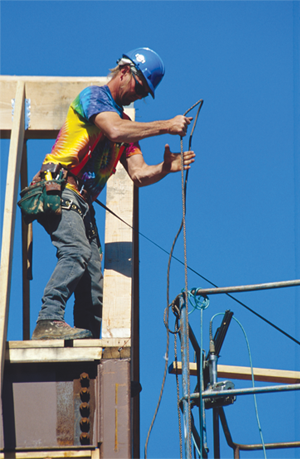
Slips, trips, and falls are the leading causes of time lost in the workplace. The Occupational Safety and Health Administration (OSHA) has cited fall protection standard violations more frequently than any other standard.
These types of hazards are serious issues for workers and employers, but their risk can be minimized with 10 simple ways to prevent slips, trips, and falls. With the risk of injury ranging from a simple sprained ankle to serious injury or death, fall protection and prevention should be everyone’s top priority.
These 10 ways to prevent injury should be considered best practices in every industry.
Like any other safety hazard, slips, trips, and falls can be highlighted during safety training. Make sure that everyone can recognize and avoid slip, trip, and fall hazards and that they use PPE correctly when necessary.
With these types of hazards being common to every type of work environment, it is important to notify supervisors or maintenance crews of slip, trip, and fall hazards when they are present. With so many ways to avoid or lessen the severity of slip, trip, and fall hazards, hopefully businesses will take steps to abate this hazards and less time will be lost by workers.
Your cart is empty.
Slips, Trips, and Falls toolbox talk
A simple, 5 minute outline of what to cover in a toolbox talk on Slips, Trips, and Falls.
Download a Slips, Trips, and Falls toolbox talk pdf
Slips, trips and falls are a common reason for many of the injuries in workplaces. They can cause minor injuries but can also lead to serious, long-term injuries. Many slip, trips and falls are avoidable and there are usually easy solutions a workplace can apply to control the risk, either by eliminating or minimising it. It could be as simple as cleaning up a spillage straight away, or moving a cord off a walkway which can prevent injuries from occurring.
Why run a Slips, Trips, and Falls Toolbox Talk?
- Prevent unnecessary injury from slip, trips and falls by improving awareness and training
- Fewer injuries means higher productivity
- Makes sure workers know what to look for and what to do about it to reduce the risk of an injury occurring
What to watch out for that are common causes of slip, trips and falls?
- Poor housekeeping & messy sites
- Poor lighting
- Uneven walking surfaces
- Clutter on site
- Uncovered cords and cables
- Weather conditions (e.g. rain, ice, dust)
- Obstructed views
- Unsuitable footwear
- Distractions (e.g. cell phone, other workers)
What can you do to help prevent slips, trips and falls occurring?
- Keeping work areas clear & tidy from clutter, obstructions and rubbish
- Any waste placed in designated bins
- Clean up any leaks or spills immediately
- Put tools and equipment away
- Wear suitable footwear (e.g. grippy, anti-slip)
- Ensure work areas are well lit and sufficient light for work
- Keep cords and cables out of walkways, covered or secured
- Be aware of your surroundings and focus on what you are doing
- Work to the weather conditions
What if a slip, trip or fall occurs or nearly occurs?
- Report all slip, trip and fall accidents and near misses, with or without injury, this will help identify the hazards and implement control measures to prevent reoccurrence
Key takeaways
- Simply cleaning up your work area as you go, can help reduce slip, trips and falls
- Make sure you are always aware of your surroundings and look where you are walking
If you see a hazard that has the potential to cause a slip, trip or fall then pick it up or fix it – don’t wait for someone else to do it. Do it yourself!
Sales Inquiries Contact:
- AU 02 5104 6116
- NZ 09 886 3309
Support Inquiries Contact:
- [email protected]
- Help Centre
- Media Enquiries
- Toolbox Talk Topic Tool
- Health & Safety Consultant Directory
- Terms and Conditions
- Privacy Policy
- Account Owner Terms
- Facebook logo to SaferMe FACEBOOK PAGE
- Twitter logo to SaferMe twitter PAGE
- Skip to main content
- Skip to site information
- Departments
Language selection
- Français

Scheduled maintenance - Thursday, July 12 at 5:00 PM EDT
We expect this update to take about an hour. Access to this website will be unavailable during this time.
Prevention of Slips, Trips and Falls
On this page, how do falls happen, how to prevent falls due to slips and trips, what can you do to avoid falling at work.
Statistics show that the majority (67%) of falls happen on the same level resulting from slips and trips. The remaining 30% are falls from a height. This document will summarize information on "falls on the same level" (slips and trips). Falls from an elevation, such as falls from ladders, roofs, down stairs or from jumping to a lower level, etc., is discussed in other documents since each type of fall must be assessed as part of a fall prevention program .
Slips happen where there is too little friction or traction between the footwear and the walking surface. Common causes of slips are:
- wet or oily surfaces
- occasional spills
- weather hazards
- loose, unanchored rugs or mats
- flooring or other walking surfaces that do not have the same degree of traction in all areas
Trips happen when your foot collides (strikes, hits) an object causing you to lose balance and, eventually fall. Common causes of tripping are:
- obstructed view
- poor lighting
- clutter in your way
- wrinkled carpeting
- uncovered cables
- bottom drawers not being closed
- uneven (steps, thresholds) walking surfaces
Both slips and trips result from unintended or unexpected change in the contact between the feet and the ground or walking surface. This fact shows that good housekeeping, quality of walking surfaces (flooring), selection of proper footwear, and appropriate pace of walking are critical for preventing fall incidents.
Housekeeping
Good housekeeping is the first and the most important (fundamental) level of preventing falls due to slips and trips. It includes:
- cleaning all spills immediately
- marking spills and wet areas
- mopping or sweeping debris from floors
- removing obstacles from walkways and always keeping walkways free of clutter
- securing (tacking, taping, etc.) mats, rugs and carpets that do not lay flat
- always closing file cabinet or storage drawers
- covering cables that cross walkways
- keeping working areas and walkways well lit
- replacing used light bulbs and faulty switches
Without good housekeeping practices, any other preventive measures such as installation of sophisticated flooring, specialty footwear or training on techniques of walking and safe falling will never be fully effective.
For more information about effective housekeeping, visit the OSH Answers document on Workplace Housekeeping - Basic Guide .
Changing or modifying walking surfaces is the next level of preventing slip and trips. Recoating or replacing floors, installing mats, pressure-sensitive abrasive strips or abrasive-filled paint-on coating and metal or synthetic decking can further improve safety and reduce the risk of falling. However, it is critical to remember that high-tech flooring requires good housekeeping as much as any other flooring. In addition, resilient, non-slippery flooring prevents or reduces foot fatigue and contributes to slip-prevention measures.
In workplaces where floors may be oily or wet or where workers spend considerable time outdoors, prevention of fall incidents should focus on selecting proper footwear. Since there is no footwear with anti-slip properties for every condition, consultation with manufacturers is highly recommended.
Properly fitting footwear increases comfort and prevents fatigue which, in turn, improves safety for the employee. For more information on footwear visit the OSH Answers document on Safety Footwear .
You can reduce the risk of slipping on wet flooring by:
- taking your time and paying attention to where you are going
- adjusting your stride to a pace that is suitable for the walking surface and the tasks you are doing
- walking with the feet pointed slightly outward
- making wide turns at corners
You can reduce the risk of tripping by:
- keeping walking areas clear from clutter or obstructions
- keeping flooring in good condition
- always using installed light sources that provide sufficient light for your tasks
- using a flashlight if you enter a dark room where there is no light
- making sure that things you are carrying or pushing do not prevent you from seeing any obstructions, spills, etc.
- Fact sheet last revised: 2023-03-28
Sorry, we're unable to complete your request
We cannot complete your request due to a technical difficulty. You may return to the previous page or go to the homepage and explore other options. For immediate assistance please call us.
Error Ref: %26%2332%3b%26%2335%3b18%26%2346%3b56645e68%26%2346%3b1714041109%26%2346%3b13b5d696
Facts About Falls
Each year, millions of older people—those 65 and older—fall. In fact, more than one out of four older people falls each year, 1 but less than half tell their doctor. 2 Falling once doubles your chances of falling again. 3
Falls Are Serious and Costly
- One out of five falls causes a serious injury such as broken bones or a head injury. 4,5
- Each year, 3 million older people are treated in emergency departments for fall injuries. 6
- Over 800,000 patients a year are hospitalized because of a fall injury, most often because of a head injury or hip fracture. 6
- Each year at least 300,000 older people are hospitalized for hip fractures. 7
- More than 95% of hip fractures are caused by falling, 8 usually by falling sideways. 9
- Falls are the most common cause of traumatic brain injuries (TBI). 10
- In 2015, the total medical costs for falls totaled more than $50 billion. 11 Medicare and Medicaid shouldered 75% of these costs.
What Can Happen After a Fall?
Many falls do not cause injuries. But one out of five falls does cause a serious injury such as a broken bone or a head injury. 4,5 These injuries can make it hard for a person to get around, do everyday activities, or live on their own.
- Falls can cause broken bones, like wrist, arm, ankle, and hip fractures.
- Falls can cause head injuries. These can be very serious, especially if the person is taking certain medicines (like blood thinners). An older person who falls and hits their head should see their doctor right away to make sure they don’t have a brain injury.
- Many people who fall, even if they’re not injured, become afraid of falling. This fear may cause a person to cut down on their everyday activities. When a person is less active, they become weaker and this increases their chances of falling. 12
What Conditions Make You More Likely to Fall?
Research has identified many conditions that contribute to falling. These are called risk factors. Many risk factors can be changed or modified to help prevent falls. They include:
- Lower body weakness
- Vitamin D deficiency (that is, not enough vitamin D in your system)
- Difficulties with walking and balance
- Use of medicines, such as tranquilizers, sedatives, or antidepressants. Even some over-the-counter medicines can affect balance and how steady you are on your feet.
- Vision problems
- Foot pain or poor footwear
- broken or uneven steps, and
- throw rugs or clutter that can be tripped over.
Most falls are caused by a combination of risk factors. The more risk factors a person has, the greater their chances of falling.
Healthcare providers can help cut down a person’s risk by reducing the fall risk factors listed above.
Falls can be prevented. These are some simple things you can do to keep yourself from falling.
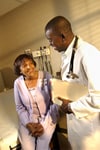
Talk to Your Doctor
- Ask your doctor or healthcare provider to evaluate your risk for falling and talk with them about specific things you can do.
- Ask your doctor or pharmacist to review your medicines to see if any might make you dizzy or sleepy. This should include prescription medicines and over-the counter medicines.
- Ask your doctor or healthcare provider about taking vitamin D supplements.
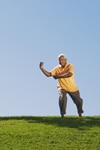
Do Strength and Balance Exercises
Do exercises that make your legs stronger and improve your balance. Tai Chi is a good example of this kind of exercise.
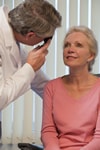
Have Your Eyes Checked
Have your eyes checked by an eye doctor at least once a year, and be sure to update your eyeglasses if needed.
If you have bifocal or progressive lenses, you may want to get a pair of glasses with only your distance prescription for outdoor activities, such as walking. Sometimes these types of lenses can make things seem closer or farther away than they really are.
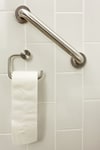
Make Your Home Safer
- Get rid of things you could trip over.
- Add grab bars inside and outside your tub or shower and next to the toilet.
- Put railings on both sides of stairs.
- Make sure your home has lots of light by adding more or brighter light bulbs.

For more information about how you can prevent falls, check out some of our online STEADI resources for older adults.
These resources include:
- Stay Independent Brochure
- What You Can Do to Prevent Falls Brochure
- Check for Safety Brochure
- Postural Hypotension Brochure
- Chair Rise Exercise
- Costs of Falls Among Older Adults
- Hip Fractures Among Older Adults
- CDC Compendium of Effective Fall Interventions: What Works for Community-Dwelling Older Adults, 4th Edition
- Preventing Falls: A Guide to Implementing Effective Community-Based Fall Prevention Programs
- Publications and Resources
- Stopping Elderly Accidents, Deaths & Injuries (STEADI)
- Bergen G, Stevens MR, Burns ER. Falls and Fall Injuries Among Adults Aged ≥65 Years — United States, 2014. MMWR Morb Mortal Wkly Rep 2016;65:993–998. DOI: http://dx.doi.org/10.15585/mmwr.mm6537a2
- Stevens JA, Ballesteros MF, Mack KA, Rudd RA, DeCaro E, Adler G. Gender differences in seeking care for falls in the aged Medicare Population. Am J Prev Med 2012;43:59–62.
- O’Loughlin J et al. Incidence of and risk factors for falls and injurious falls among the community-dwelling elderly. American journal of epidemiology, 1993, 137:342-54.
- Alexander BH, Rivara FP, Wolf ME. The cost and frequency of hospitalization for fall–related injuries in older adults. American Journal of Public Health 1992;82(7):1020–3.
- Sterling DA, O’Connor JA, Bonadies J. Geriatric falls: injury severity is high and disproportionate to mechanism. Journal of Trauma–Injury, Infection and Critical Care 2001;50(1):116–9.
- Centers for Disease Control and Prevention, National Center for Injury Prevention and Control. Web–based Injury Statistics Query and Reporting System (WISQARS) [online]. Accessed August 5, 2016.
- Healthcare Cost and Utilization Project (HCUP). 2012. Agency for Healthcare Research and Quality, Rockville, MD. http://hcupnet.ahrq.gov . Accessed 5 August 2016.
- Hayes WC, Myers ER, Morris JN, Gerhart TN, Yett HS, Lipsitz LA. Impact near the hip dominates fracture risk in elderly nursing home residents who fall. Calcif Tissue Int 1993;52:192-198.
- Parkkari J, Kannus P, Palvanen M, Natri A, Vainio J, Aho H, Vuori I, Järvinen M. Majority of hip fractures occur as a result of a fall and impact on the greater trochanter of the femur: a prospective controlled hip fracture study with 206 consecutive patients. Calcif Tissue Int, 1999;65:183–7.
- Jager TE, Weiss HB, Coben JH, Pepe PE. Traumatic brain injuries evaluated in U.S. emergency departments, 1992–1994. Academic Emergency Medicine 2000&359;7(2):134–40.
- Florence CS, Bergen G, Atherly A, Burns ER, Stevens JA, Drake C. Medical Costs of Fatal and Nonfatal Falls in Older Adults. Journal of the American Geriatrics Society, 2018 March, DOI:10.1111/jgs.15304
- Vellas BJ, Wayne SJ, Romero LJ, Baumgartner RN, Garry PJ. Fear of falling and restriction of mobility in elderly fallers. Age and Ageing 1997;26:189–193.

To receive email updates about this topic, enter your email address:
Exit Notification / Disclaimer Policy
- The Centers for Disease Control and Prevention (CDC) cannot attest to the accuracy of a non-federal website.
- Linking to a non-federal website does not constitute an endorsement by CDC or any of its employees of the sponsors or the information and products presented on the website.
- You will be subject to the destination website's privacy policy when you follow the link.
- CDC is not responsible for Section 508 compliance (accessibility) on other federal or private website.

Toolbox talks for safety experts
How To Prevent Slips, Trips, And Falls
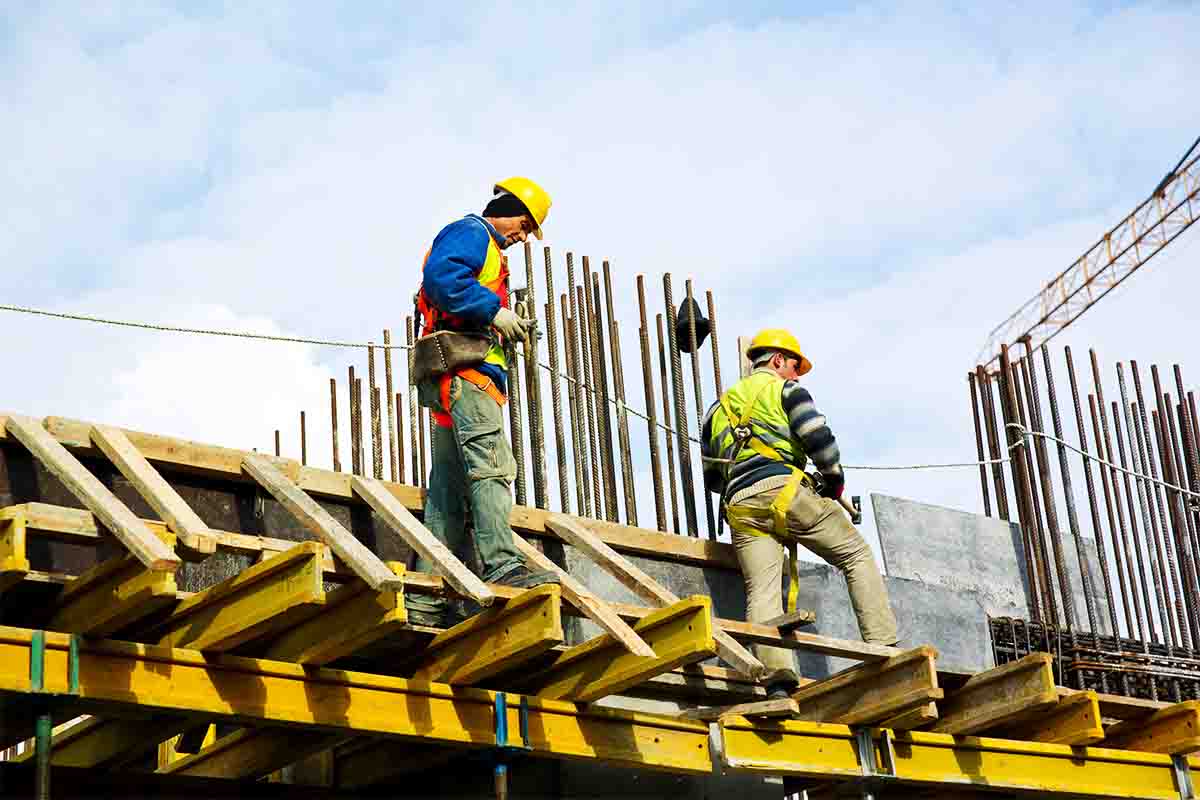
Nobody ever thinks that they will be the ones to slip, trip, or fall. Everything is going smooth until it’s not. The construction industry accounted for just less than 50 percent of all fatal falls, slips, and trips in 2020.
Unfortunately, this is not as surprising of a statistic as it should be. You might think that with the inherent risks of the trades, we should expect there to be such incidents. But slip, trip, and fall injuries are preventable.
Nothing will slow your work down more than a workplace injury. So, let’s see how we can contribute to the prevention of slips, trips, and falls.
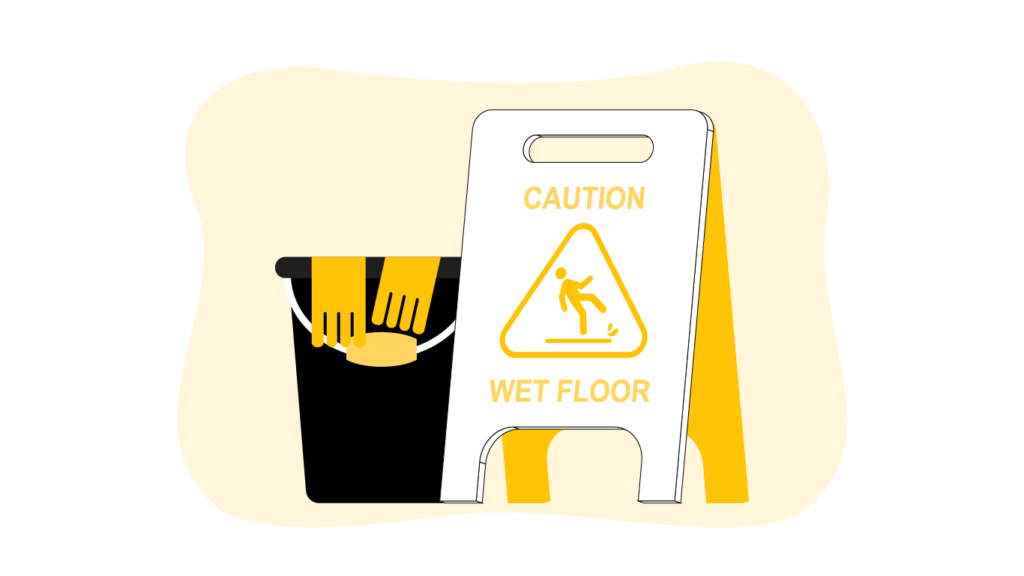
“Prevent falls and slips, or you’ll have a hospital trip.”
Why Toolbox Talks & Safety Is Important
OSHA and other organizations encourage daily toolbox talks that give statistics and produce general awareness about workplace safety hazards. Sharing statistics and experiences like those mentioned above can be beneficial in increasing awareness so that you can prevent workplace injuries or death.
Reminders can help workers to be more cautious and aware of fixing problems before they happen and prevent accidents in general. An example toolbox talk template can be seen below.
OSHA Regulations & Standards for Slips, Trips, and Falls Hazards
An understanding of OSHA regulations can help us to be aware of data-driven safety measures that should be put in place to prevent injury and death. Relevant standards include:
- 1910 Subpart D – Walking-Working Surfaces ,
- 1910.36 – Design and construction requirements for exit routes and
- 1910.37 – Maintenance, safeguards, and operational features for exit routes
However, beyond just giving rules, OSHA recommends implementing programs and procedures to mitigate risks, so we must establish a job site culture that expects everyone to follow those regulations.
OSHA regulations identify the following challenges related to slips, trips, and falls:
- Poorly organized job sites can result in workers tripping over tools, materials, and trash. Bad housekeeping and failure to dispose of garbage or clear out debris and residue can also result in a compounding pile-up one day after the next, thus resulting in trip hazards. OSHA officers can perform random walkthroughs of job sites, and if they decide your housekeeping is not in order, they will fine the company.
- Falling from ladders is a real danger because of improper setup. OSHA 3150 mandates that you set up scaffolding and ladders on solid-level surfaces. You also might be in the bad habit of carrying items up and down an extension ladder, step ladders, or scaffolding. OSHA standards highlight that you should maintain 3 points of contact with your hands and feet. That means you can’t carry things up the ladder. It would be best if you instead used a roof derrick for more oversized items or a bucket and rope to hoist equipment and tools to upper levels.
- Utilizing fall protection is essential in preventing falls , which have the highest potential for extreme injuries and death. The construction industry has been able to choose the fall protection systems it uses on a case-by-case basis since the 1990s. In 2017, OSHA extended this freedom to general industry. In the construction industry, personal protective equipment such as harnesses and lanyards is expected to be worn at heights 6 feet and above. On open exposures that are 4 feet and higher, you should use guardrails and toeboards.
Slips, Trips, and Falls Hazards
To work towards the prevention of slips, trips, and falls, we need to understand what a safety hazard is.
Examples of safety hazards in the construction industry are the following:
- Uncovered cables on the floor
- Uneven surfaces
- Debris or waste caused by poor housekeeping
- Wet surfaces
- Ladders that haven’t been secured

Slips, Trips, and Falls Toolbox Talk Template
In order to prevent slips, trips, and falls, it is important to be aware of the hazards that can cause these types of accidents. Some common causes of slips, trips and falls on construction sites include:
- Wet or icy surfaces
- Poor lighting
- Loose debris
- Tools on the ground
- Unguarded openings
- Lack of proper fall prevention equipment
To avoid these hazards, take the following precautions:
- Wear appropriate shoes with slip-resistant soles
- Use caution when walking on wet or icy surfaces
- Make sure all walkways and stairs are well-lit
- Sweep up any loose debris or tools on the ground
- Use appropriate PPE
- Understand how to use PPE correctly and safely
Who is responsible for preventing slips, trips, and falls?
Everyone at work has a responsibility. The employer is ultimately responsible, but we should all look out for the well-being of ourselves and our colleagues.
We do this by learning and understanding instructions for PPE and for alerting colleagues to openings; by tidying away tools after use, and cleaning out workspaces. If you spot an issue relating to the weather or to lighting that is faulty, report it so that the company can fix it before it causes an accident.
How To Prevent Illnesses And Injuries Related To Slips and Falls
- Immediately clean up any spills, and demarcate any hazards —rope-off areas where there could be chemicals or other condensates. An injury could occur from hitting the ground due to a slip. Moreover, severe illness and death could result from slipping in corrosive or biohazardous materials.
- Cover holes and eliminate uneven surfaces that could have foot traffic. You could unknowingly trip and fall to the ground. If the hole is large enough, you could fall in, thus risking more than a minor injury.
- Provide proper lighting to ensure visibility so you don’t trip on what you cannot see.
- Use fall protection in the form of guardrails and personal protective equipment so that a person cannot fall over an open exposure, even accidentally. Falling from heights 4 feet and above puts you at serious risk of death.
- Establish a routine to inspect fall protection. It’s in place to save your life. You will want to make sure that it will work to protect you from injury or death.
Questions for the Employees
After a discussion, you may want to test everyone’s knowledge and retention of the information to apply what they’ve learned.
- What percent of workplace fatalities are from the construction industry?
- What are the potential causes of injury, and what could happen on your job site?
- How would you feel if an injury or death occurred on your job site?
- What can you personally do to prevent slip, trip, and fall incidents?
- What is our slips, trips, and falls safety talk slogan?
Email Template To Promote Slips, Trips, And Falls Safety
Sending a concise email can help to promote safety. Use this email template, which includes the highlights, and add more bullets as needed to address particular concerns for your job site.
Hello Team,
Let’s all be aware to prevent falls and slips, or someone will have a hospital trip.
The construction industry accounted for almost 50 percent of all fatal falls, slips, and trips in 2020.
Understanding our job site hazards and the ways we can mitigate risks is crucial to prevent us from being amongst those statistics.
- Remember to clean as you go and stay organized.
- Use handrails and ask for help when carrying big loads so that the extra hand is available to grab railings and you have full awareness of where you are walking.
- Use fall protection and PPE.
Increase your awareness as you are working. When you see a potential hazard, immediately report it and work to resolve it to prevent injury to yourself and others.
Construction Site Management/Foremen
Create A Safety Culture
You are now highly knowledgeable in the prevention of slips, trips, and falls. It is your responsibility to encourage your workers to increase awareness of potential hazards and processes for reporting. All incidents are preventable ! Remember, you must “prevent falls and slips, or you’ll have a hospital trip.”
Contact | Subscribe | Media centre

- Lifting, pushing and pulling
- Psychosocial hazards
- Working at heights
- Crystalline silica and silicosis
Managing health and safety
- Identify, assess and control hazards
- Safety data sheets
- Personal protective equipment
- Emergency plans and procedures
- Incident reporting
Industry and business
- Construction
- Small business
- Agriculture
- Gig economy
The Commonwealth, states and territories regulate and enforce WHS laws.
Find your Regulator
Model WHS Laws
We created the model WHS laws in 2011.
- Model WHS Act
- Model WHS Regulations
- Duties under Model WHS laws
- Codes of Practice
- Legislation
WHS laws in your jurisdiction
Contact your regulator
Data and Research
We collect, analyse and publish data and information on work health and safety and workers' compensation.
See our data
- Work-related fatalities
- Work-related injuries
- Work-related diseases
- Return to Work
- Explore our data
- About our data
- Industry benchmarking
- Research by industry or topic
See our latest Key work health and safety statistics
explore our data
Workers' Compensation
We develop national policy and strategy about workers' compensation.
- Workers’ compensation
- Comparing workers' compensation in Australia
- National Return to Work Strategy
- Deemed diseases
- Permanent impairment
- Workers' compensation for psychological injury

Read the Strategy
Resources and Publications
We publish a wide range of resources covering many work health and safety topics.
- Codes of practice
- Video and audio
- Corporate publications
Media centre
- Media releases
- News update
Read our Codes of Practice
read the codes
Slips, trips and falls
Each year slips, trips and falls cause thousands of preventable injuries.
- Safety by topic
The most common ones are:
- musculoskeletal injuries (injuries to muscles, nerves, tendons, joints, cartilage and spinal discs)
- dislocations.
More serious injuries and deaths can also happen.
Slip, trip and fall hazards
Some things that can cause you to slip are:
- the wrong footwear
- polished, wet or greasy floors.
In most cases, people trip on low obstacles that are hard to spot, such as:
- uneven edges in flooring
- loose mats
- open drawers
- untidy tools, or
- electrical cables.
Falls can result from a slip or trip, but many occur from low heights. For example:
- ditches, or
- wet or slippery surfaces.
WHS duties
As a person conducting a business or undertaking (PCBU), you must always aim to eliminate the risk of slips, trips and falls, so far as is reasonably practicable. If that is not possible, you must minimise risks so far as is reasonably practicable.
You must identify hazards, and assess and control risks. Think about your:
- work areas
- work procedures
- equipment.
Consulting with workers can help you find better and easier ways to identify and minimise risks. You should also review control measures to ensure they are working as planned.
Workers also have duties, including taking reasonable care for their own health and safety.
Managing risks
The best way to manage the risk of slips, trips and falls is to eliminate hazards at the design stage of the workplace.
If you can’t eliminate the risk, you must minimise it so far as is reasonably practicable.
Designing safe workplaces
In designing floors, stairs, lighting, drainage and storage:
- keep floors at a single level and use slip-resistant floor coverings
- install extra power points to avoid trip hazards from trailing cords
- ensure all areas are well lit, particularly stairwells
- have good drainage and slip resistant grates
- have lots of storage, so things aren’t left in walkways.
Safe work procedures
Work procedures can also impact on the incidence of slips, trips and falls. Have clear procedures to:
- remove rubbish to avoid trip hazards
- return tools and other items to their storage areas after use
- report and clean spills
Keep the workplace clean
All workers share responsibility for keeping the workplace clean and tidy.
Make sure you:
- have adequate rubbish and recycling bins
- have cleaning schedules in place
- dry floors after cleaning
- don’t have cords on walkway or work area floors.
Training helps workers become more aware of slip and trip hazards and helps to prevent injuries.
Training should include:
- awareness of slip and trip hazards
- identifying effective control measures
- duties of workers.
Using personal protective equipment (PPE)
As a PCBU, you should only use PPE:
- after you have implemented all other possible control measures.
- as an interim measure until you can use a better control measure
- as a backup in addition to other control measures.
Slip-resistant footwear
Slip-resistant footwear is a type of PPE.
Slip-resistant footwear should be appropriate for the work and workers must wear it properly.
In wet conditions, the shoe sole tread should:
- be deep enough to help penetrate the surface water
- make direct contact with the floor.
In dry conditions, the shoe sole tread:
- pattern should be a flat bottom construction
- should grip the floor with maximum contact area.
Types of slip-resistant footwear
Urethane and rubber soles are more slip resistant than vinyl and leather soles.
Sole materials that have tiny cell like features are slip resistant.
Supporting information
- Model Code of Practice: How to manage work health and safety risks
- Model Code of Practice: Managing the work environment and facilities
- Slips and trips at the workplace fact sheet
- The interactive safe work method statement (SWMS) tool provides information on preparing, using and reviewing SWMS for high risk construction work.
News related to this topic
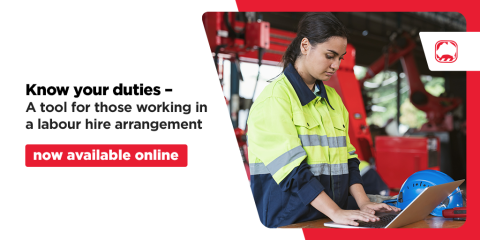
01 Dec 2023 | News
Do you use labour hire?
Read more >
See all news
Further Advice
SWA is not a regulator and cannot advise you about WHS issues in the workplace. If you need help please contact your state or territory work health and safety authority .
We develop national policy relating to WHS and workers' compensation.
- PRO Courses Guides New Tech Help Pro Expert Videos About wikiHow Pro Upgrade Sign In
- EDIT Edit this Article
- EXPLORE Tech Help Pro About Us Random Article Quizzes Request a New Article Community Dashboard This Or That Game Popular Categories Arts and Entertainment Artwork Books Movies Computers and Electronics Computers Phone Skills Technology Hacks Health Men's Health Mental Health Women's Health Relationships Dating Love Relationship Issues Hobbies and Crafts Crafts Drawing Games Education & Communication Communication Skills Personal Development Studying Personal Care and Style Fashion Hair Care Personal Hygiene Youth Personal Care School Stuff Dating All Categories Arts and Entertainment Finance and Business Home and Garden Relationship Quizzes Cars & Other Vehicles Food and Entertaining Personal Care and Style Sports and Fitness Computers and Electronics Health Pets and Animals Travel Education & Communication Hobbies and Crafts Philosophy and Religion Work World Family Life Holidays and Traditions Relationships Youth
- Browse Articles
- Learn Something New
- Quizzes Hot
- This Or That Game New
- Train Your Brain
- Explore More
- Support wikiHow
- About wikiHow
- Log in / Sign up
- Musculoskeletal System Health
How to Fall Safely
Last Updated: March 17, 2024 Approved
This article was co-authored by Justin Barnes . Justin Barnes is a Senior Home Care Specialist and the Co-Owner of Presidio Home Care, a family-owned and operated Home Care Organization based in the Los Angeles, California metro area. Presidio Home Care, which provides non-medical supportive services, was the first agency in the state of California to become a licensed Home Care Organization. Justin has over 10 years of experience in the Home Care field. He has a BS in Technology and Operations Management from the California State Polytechnic University - Pomona. wikiHow marks an article as reader-approved once it receives enough positive feedback. This article received 15 testimonials and 88% of readers who voted found it helpful, earning it our reader-approved status. This article has been viewed 500,455 times.
Falling can pose a serious risk of injury, even if it is only from a standing height. Depending on your age, health and fitness levels, the severity of those injuries can vary. However, there are a few techniques that anyone can use if they find themselves falling to help reduce the impact and prevent injury.
Falling Properly

- Tuck your your chin down, lowering your head.
- If falling down, face first, turn your head to the side.
- Bring your arms up to head level for additional protection. Put them in front of your head if falling forwards or behind your head if falling backwards.
- If you are taking anticoagulants or blood thinners and fall and hit your head, this may result in a dangerous and life-threatening bleed inside your skull. Call your doctor, who may tell you to go to the hospital for a CT scan.

- Landing fully on your arms in an attempt to catch yourself can break both your wrists and arms.

- You can try breathing out as you fall to help keep your body relaxed.

- Start in a low squat position.
- Lean forward and place your palms flat on the ground in front of you.
- Push off the ground with your legs and move your weight forwards.
- Your legs will go over your head.
- Keep your back rounded and gently try to land on a shoulder.
- Let the momentum carry you through the roll and back up onto your feet.

Preventing Falls

- Most footwear of this type will be labeled as “slip-resistant.”

- Be careful walking or running in any areas where the ground may be uneven.
- Pay attention when taking the stairs and always use the hand rail.

- Always check to make sure any ladder or step stool is secure and is in good working order.
- Never ride on a vehicle unsafely. Always enter or mount a vehicle slowly and carefully.

- Always close drawers after you are done with them.
- Don't leave cords or wires in walkways.
- Keep the area well lit.
- Walk slowly over slippery or dangerous areas, taking small controlled steps.
- Consider relocating if you live somewhere with steep stairs and falling is a concern. Otherwise, make sure you have handrails or a banister.
- Remove small throw rugs or use double-sided tape to make sure they don't flip up or slip.

Expert Q&A

- Always protect your head first. Thanks Helpful 7 Not Helpful 1
- When falling from high places, a regular forward roll is dangerous - you could break your spine or collarbone or hit your head. Instead, try doing a shoulder roll , where you roll across your spine instead of directly along it. Thanks Helpful 10 Not Helpful 2
- Try practicing how to fall in a safe environment, such as a gym with floor mats and pads. Thanks Helpful 7 Not Helpful 3

You Might Also Like

- ↑ Justin Barnes. Senior Home Care Specialist. Expert Interview. 6 March 2020.
- ↑ http://nasdonline.org/document/208/d000006/preventing-injuries-from-slips-trips-and-falls.html
- ↑ http://breakingmuscle.com/parkour/how-do-you-roll-gymnastics-vs-parkour

About This Article

Medical Disclaimer
The content of this article is not intended to be a substitute for professional medical advice, examination, diagnosis, or treatment. You should always contact your doctor or other qualified healthcare professional before starting, changing, or stopping any kind of health treatment.
Read More...
The most important thing to do if you fall is to protect your head by tucking your chin in and covering your head with your arms. Prevent serious injuries by falling on your side and keeping your limbs bent instead of straight. Avoid tensing up in order to minimize damage. For more advice from our Medical Reviewer, including how to prevent falls, read on! Did this summary help you? Yes No
- Send fan mail to authors
Reader Success Stories
Fern Hambly
Aug 25, 2022
Did this article help you?
Aug 4, 2016
Carolyn Strong
Jan 3, 2018
Apr 15, 2017
April Harris

Featured Articles

Trending Articles

Watch Articles

- Terms of Use
- Privacy Policy
- Do Not Sell or Share My Info
- Not Selling Info
wikiHow Tech Help Pro:
Level up your tech skills and stay ahead of the curve

Common Triggers of Slips, Trips, and Falls – And How To Avoid Them
Slips, trips, and falls are some of the most common causes of workplace injuries in the US, accounting for over 8 million emergency room treatments every year. While not all these incidents are severe, some will have serious consequences, such as bruises, strains, sprains, fractures, and head injuries.
In many cases, a slip or fall can make it difficult for you to move around, do everyday activities, or live as independently as you used to. It could even force you to take a few days or weeks off work, which will affect your income and productivity.
“Slips, trips, and falls can be frustrating, embarrassing, painful, and costly to you and your family. These accidents often leave victims hospitalized for days or weeks while the utility bills, medical bills, and other expenses collect at your doorstep,” says Alex Bouganim and Joseph Capetola, slip and fall lawyers in NYC .
What To Do If You Slip, Trip, Or Fall
Sometimes, no matter how careful you are, accidents can still happen, and it is crucial that you know what to do in this kind of situation so you can manage it in the best way possible. One of the first steps is to immediately seek medical attention, especially if the fall was quite hard and you are feeling pain anywhere in your body.
Injuries may not always be apparent, and a doctor can help determine specific problems and recommend the proper treatment. Aside from this, a trip to the doctor can help establish credibility if you decide to file a personal injury case or claim compensation against whoever was liable for the accident.
However, if you experience difficulty moving around, do not force yourself to get up right away and look for someone to help you instead. For severe trauma or injury, it is best to call an ambulance and stay in place until they arrive since any sudden movement could aggravate the damage to your body.
Finally, remember to report the incident to the property owner or manager or get someone to do it for you if you cannot move around freely, and make sure that there is proper documentation to help you establish evidence when you claim compensation. It is also a good idea to consult with a legal expert for specific guidance on what to do after a slip and fall accident since the actual steps to do may vary depending on the location and circumstances of the accident.
Common Causes And How To Avoid Them
Awareness is vital in preventing you from becoming a victim of these accidents. When you know the causes of slips, trips, and falls, it becomes easier to avoid them and you can even prevent them from happening to others. Take a look at these common triggers of slips, trips, and falls and what you can do about them:
1. Poor Lighting
Poor lighting can make it difficult to see hazards and other dangers, such as stairs, curbs, or wet and slippery surfaces, increasing your risk of slipping or falling. If you have poor vision, this is even more of a problem because the dim and dark surroundings can hide any obstructions in your path and prevent you from taking evasive action to avoid getting tripped.
To prevent slip and fall accidents due to poor lighting, ensure that all walkways are well-lit, especially in areas with high foot traffic or potential hazards. Install adequate lighting sources, such as overhead lighting or task lighting in darker areas, and immediately replace light bulbs when they burn out.
2. Slippery Or Uneven Surfaces
One of the most common triggers of slips, trips, and falls are slippery or uneven surfaces because they can cause you to lose your footing easily. These are often caused by ice, snow, water, oil or grease, sand, mud or dirt, loose gravels or stones, and man-made causes like waxed floors, which could become slippery due to spills or leaks.
Fortunately, there are many ways you can avoid falling victim to these triggers, and wearing proper footwear is at the top of the list. Shoes with good traction and non-slip soles can help prevent slips and falls, while smooth or worn-out soles can increase your risk. Take extra precautions by immediately cleaning up any spills or wet areas, using non-slip mats in areas prone to getting wet, such as bathrooms or kitchens, and being careful when walking on freshly cleaned or waxed floors.
3. Mats And Rugs
When not correctly displayed or maintained, mats and rugs can result in a slip or trip, especially for an unsuspecting passerby. For example, curled-up edges or lumps in the middle of a rug could entangle your feet and cause you to lose your balance. It is also highly possible for a loose and unsecured rug to slip out of place right when you step on it, leading to a nasty fall and an injury.
To prevent rugs and mats from becoming a tripping hazard, ensure they are properly secured and maintained. Regularly inspect them for signs of wear and tear, and immediately replace any rugs that are frayed, have holes, or are lumped in certain parts. Keep them completely flat, with no bumps or curls on the edges, and use non-slip pads underneath so they stay firmly in place.
4. Excessive Clutter
Aside from being a tripping hazard, clutter can also cause fires, which is why it is essential to do regular housekeeping to prevent these incidents from occurring. Excessive clutter like books, shoes, toys, cords, loose rugs, and stacks of newspapers on the floor create environmental hazards that impede movement and result in blockages that hinder people from walking safely.
You can minimize the occurrence of these incidents by making sure that all walkways, hallways, and stairways are always clear of clutter. Keep your space organized, secure loose cords, and use storage solutions such as shelves, cabinets, or drawers to keep items off the floors and tables.
5. Uneven Or Poorly Built Stairs
Stairs that are damaged or not built according to safety standards can lead to serious injuries, especially if you fall from a higher level. This includes stairways with no handrails covered in dirt and debris or have broken, loose, uneven, or missing steps. Aside from these, obstructions like boxes or clutter on the steps can also cause people to trip and fall.
You can reduce the risk of slipping firstly by ensuring that your stairs are built according to strict guidelines , with the stair slope maximum range being from 30 to 50 degrees. As an additional preventive measure, you can install non-slip surfaces on the stairs, such as rubber or slip-resistant paint, and ensure that stairways are well-lit and have a clear path by removing any items left on the steps like shoes or work equipment that can create potential hazards. Carpeted stairs should also be in good condition with no noticeable deterioration, excessive wear, or missing treads.
The post Common Triggers of Slips, Trips, and Falls – And How To Avoid Them appeared first on What's Trending .

Educating Injury Victims
- Slip and Falls
- Trip and Fall Injury Claims
Differences Between Trip and Fall and Slip and Fall Claims

Matthew Carter, Esq.
Matthew has been a licensed attorney since 2004. He was awarded the Martindale rating of AV – Preeminent. This is given to attorneys ranked at the highest level of professional excellence by their peers.
Here’s how a trip and fall differs from a slip and fall, and what that means for your personal injury case. Protect your legal rights to fair compensation.
Slip and fall accidents and injuries, trip and fall accidents and injuries.
- Who Pays Slip or Trip and Fall Claims?
Pursuing Payment for Fall Damages
At first glance, you might think that “slip and fall” and “trip and fall” mean the same thing.
In legal terms, “trip and fall” describes a different type of incident with a different type of injury. The differences can change your legal claim.
Slip and falls are caused by slick surfaces and victims usually fall backward.
Trip and falls are caused by obstacles that trip up a person and make them fall forward or to the side.
As with all personal injury claims, the value of a trip and fall case largely depends on the specific facts of the case.
Slip and fall accidents usually happen when the floor or ground is made slick or slippery. When you put your weight on the slick surface, your feet slide out from under you and you typically fall backward, onto your bottom, hips, or your back.
These kinds of falls can result in serious injuries to your head , neck , back , and various other body parts. Common causes of slips and falls are snowy or icy sidewalks, a wet floor, or some other slippery surface.
Case Example: Icy Parking Lot Causes Slip and Fall Injury
Paul was staying at a big hotel with a private, secured parking lot for guests. It’s the busy holiday season, with parties and business conventions booked every day. However, it was a bad winter with frequent ice and snow storms.
Paul’s company hosted a business conference at the hotel. One evening, Paul was carrying a box of conference materials as he headed to his car. The parking lot was still covered with snow from the night before.
Because of the snow cover, Paul didn’t see the icy patches on the untreated parking lot.
He slipped and fell, slamming the back side of his head and body to the asphalt. A concussion and dislocated shoulder kept Paul out of work for several weeks.

Trip and fall accidents happen when there is some kind of obstruction on the floor or ground. This dangerous condition, known as a “tripping hazard,” can catch someone’s foot or leg while they are walking or running.
The momentum of a trip and fall accident usually results in the victim falling forward and suffering an injury.
Trip and fall accidents tend to injure different parts of the body. Hands, arms, knees, elbows, and the face can all be potential areas for trip and fall injury claims.
Case Example: Jury Awards $3 Million in Trip and Fall Case
Lynda Sadowski was walking through the Jack Casino when she tripped over a flattened Wet Floor sign, falling forward and fracturing her kneecap. Her knee required surgical repair and left her with diminished mobility.
Casino security film showed that another customer had knocked over the sign earlier. Moments before Sadowski’s fall, a casino employee walked around the flattened sign without picking it up.
The casino argued that Sadowski wasn’t watching where she was going. Sadowski’s attorneys argued the casino “failed to use ‘ordinary care’ for Sadowski’s safety and failed to maintain a reasonably safe environment, resulting in the injury.”
The jury agreed with Sadowski, awarding $3 million for her injuries and pain and suffering.
Sadowski vs. Jack Casino
A trip and fall accident can happen anywhere. Perhaps a crowded antique shop’s narrow aisles are strewn with merchandise that present tripping hazards. Or a rubber mat in front of a building entrance bunches up and presents a tripping hazard. Maybe a veterinarian allows unleashed animals in the office that then get tangled under guests’ feet.
Besides having different causes, trip and fall accidents can also cause different kinds of injuries.
FOOSH injuries (Fallen Onto an OutStretched Hand) are common. FOOSH injuries can include broken wrists, broken arms, and ligament tears. People who trip and fall forward can suffer significant facial trauma and head injuries.
Who Pays for Slip or Trip and Fall Claims?
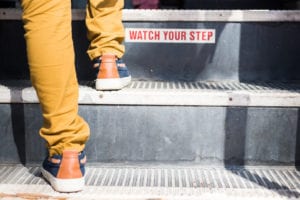
As with slip and fall cases, trip and fall injury claims are usually premises liability claims. This means that the property owner or manager is the main person responsible for the trip and fall injury.
In most cases, the property or business owner should have control and responsibility for any fall hazards on the premises.
Were you hurt while patronizing a business? There is probably at least one commercial general liability insurance policy that can compensate you for damages.
If you suffered your trip and fall injury at someone else’s home, their homeowner’s insurance policy or renter’s insurance should compensate you for your injury.
There may be other parties responsible for your fall accident. For example, if the owner has leased a commercial property to a business, the business owner may also have responsibility for your injury. If your fall was due to the intentional behavior of a third party, they may also be liable in addition to the owner of the premises or business.
Also keep in mind that slip or trip and fall injuries may give rise to product liability cases.
Examples of product liability in fall claims:
- If a slip and fall was caused by a pool of melted ice leaking from a defective grocery store freezer, the freezer manufacturer may share responsibility for your injuries.
- If a trip and fall was caused by a defective hotel rug, the manufacturer of the rug may also be liable for your injury.

After figuring out who should pay for your fall injury, the next question is how to pursue a claim to compensate you for your injury.
Decide if you can handle your own trip and fall claim or if it should be handled by a personal injury attorney.
Create an injury claim document file for organizing your medical bills, medical records, and other evidence of how your injury has affected your life.
You’ll also need evidence of the property owner’s negligence, such as photographs of the accident scene and witness statements from people who saw what happened to you.
If you decide to handle your own claim, put together a demand letter so the insurance adjuster can see your damages and decide whether to offer you a settlement. Keep in mind that insurance companies tend to offer less money to unrepresented claimants in the hope they’ll take a quick settlement and go away.
If you cannot settle with the insurance company, you may need to file a personal injury lawsuit. If you haven’t already consulted an experienced attorney, now is the time to get legal advice. The evidence that you gathered for the insurance company will be useful here.
Most claims settle out of court. However, if your attorney takes your trip and fall case to trial, the jury may award a monetary judgment. For example, if you have a broken wrist FOOSH injury, you could get as much as $80,000-$120,000 from a favorable jury verdict.
Minding Your Step
It’s always important to watch where you’re walking and to be careful. But you can’t be responsible for everything, all the time. When you step onto someone else’s property or patronize their business, they need to make sure that you can safely walk through their parking lot, sidewalks, walkways, and buildings.
Never leave the scene of a trip and fall accident without notifying the property owner or manager. If you’re injured at a business location, ask the manager to fill out an incident report .
Seek prompt medical treatment after a slip or trip and fall injury. Tell the medical prover when, where, and how you were injured. You’ll need proof of the accident date and location, along with evidence of your injuries for a successful claim.
A broken wrist or a broken nose may not be fatal. But these injuries can be painful and expensive. You deserve to be compensated. If you or a loved one has suffered a fall injury caused by someone else’s negligence, contact a personal injury law firm in your state for a free consultation.
How Much is Your Injury Claim Worth?
Find out now with a FREE case review from an attorney…
- Your Accident
- Contact Info
- Your Evaluation
So far so good! Please answer a few more questions and then click "Go to Last Step"
Unfortunately, based on your answers we can’t provide a case review. But you may qualify for pre-settlement funding.
This funding gives you the money you need to cover personal expenses now. Approval takes < 24 hours with no credit checks and no obligation — you only pay it back if you win your claim. Funding can range from $500-$100,000, depending on your case and needs.
We respect your privacy. The only person who may contact you is a licensed attorney who can help.
By submitting, you agree to the Terms & Conditions. You consent that the law firm you are matched with or a call center may contact you by phone and/or text, even if you are on a Do Not Call Registry. You agree these messages may be auto-dialed or pre-recorded, and consent is not a condition of purchase.
Unfortunately, based on your answers, we will not be able to help you. But that does not mean you do not qualify.
Please use the button below to see how else we can help.
View More Options for Help with your Injury
- Attorney Info
Please answer a few more questions and then click "Go to Last Step"
By submitting, you agree to the Terms & Conditions. You consent that the funding company you are matched with or a call center may contact you by phone and/or text, even if you are on a Do Not Call Registry. You agree these messages may be auto-dialed or pre-recorded, and consent is not a condition of purchase.
Success. You will be contacted soon about your funding.
If you’ve been injured in an accident, you may qualify for a settlement. Click here to see if you qualify now .
Find out now with a FREE case review from an attorney…
Protect Your Trip »
18 most romantic getaways in new york state.
Some of the most romantic destinations in the U.S. can be found in New York State.
Romantic Getaways in New York

Courtesy of The Otesaga Resort Hotel
From relaxing at a lake to exploring the city, New York offers plenty of options for a romantic vacation.
It's nearly impossible not to find love in a state that's served as the backdrop for so many romantic films, from "Dirty Dancing" in the Catskills to the countless classics – think "Annie Hall," "When Harry Met Sally," "You've Got Mail" – set in New York City . In popular sitcom "The Office," Pam and Jim tie the knot beneath Niagara Falls , otherwise known as the "Honeymoon Capital of the World."
Even off-screen, romance abounds in New York state's top destinations , from the Finger Lakes to the Adirondacks . Though the options for a couples vacation in the Empire State may actually be endless, these are some of the best places to spend a romantic weekend (or longer) in New York – including several ideal weekend getaways from New York City .
Most Romantic Getaways in New York State
- Inns of Aurora Resort & Spa
- Mirbeau Inn & Spa
- Belhurst Castle and Winery
- The Lake House on Canandaigua
Cooperstown
- Glenmere Mansion
- Mohonk Mountain House
The Catskills
Niagara falls.
- Hutton Brickyards
New York City
- Valley Rock Inn & Mountain Club
- Gurney's Montauk Resort & Seawater Spa
Westchester County
- Whiteface Lodge
- The Sagamore Resort
Inns of Aurora Resort & Spa: Aurora

Courtesy of Inns of Aurora Resort & Spa
The Inns of Aurora Resort & Spa comprises five historic inns and a cottage, each with their own distinctive vibe. The Aurora Inn (the site's original hotel), built in 1833, blends vintage furnishings with modern amenities, while the Rowland House, built in 1903, is a more eclectic option. All guest rooms are equipped with plush bathrobes; some even feature fireplaces and views of Cayuga Lake, perfect for cuddling up to admire the spectacular sunsets.
Lovebirds can enjoy complimentary coffee and homemade granola bars each morning, a glass of local wine in the evenings, and seasonal s'mores by the lakefront fire pit. You'll also find candlelit dining at the 1833 Kitchen & Bar and culinary classes just down the street from the Aurora Inn. Explore the beauty of the Finger Lakes with complimentary gear such as kayaks, canoes and stand-up paddleboards; bicycles; telescopes for stargazing; bird-watching binoculars; and more.
The highlight of any stay at the Inns of Aurora is its spa, a 15,000-square-foot healing and wellness center less than a mile from the main hotel property. Opened in 2021, the state-of-the-art facility features 10 treatment rooms where you can enjoy a variety of signature and customized treatments, as well as a full-service salon. All spa services come with a seasonal menu of fare at the on-site cafe, six jetted spa pools with optional hydrotherapy circuits, steam rooms, a sauna and fire pits.
Address: 391 Main St., Aurora, NY 13026
Read: The Best Wellness Retreats in the U.S.
Mirbeau Inn & Spa: Skaneateles

Courtesy of Mirbeau Inn & Spa
The sweet town of Skaneateles – brimming with boutique shops, art galleries and lakefront restaurants – merits a trip to the Finger Lakes. But for the ultimate in romance, book a stay at Mirbeau Inn & Spa . This French-inspired spa resort features an elegant spa, overnight accommodations and on-site dining.
Guests have the option to stay in a traditional guest room or private cottage, all of which come with fireplaces and large bathrooms with soaking tubs. Book the Mirbeau Signature Couples Massage or Art of Living couples experience and enjoy use of a heated foot pool, steam rooms and the outdoor Aqua Terrace – which features a heated spa pool with massage jets and a waterfall, a cozy fireplace, and a private bar where you can order beverages and light fare. Afterward, enjoy lunch or dinner at The Bistro & Wine Bar, where breakfast and Sunday brunch are also served. Previous guests rave about this resort, calling it serene and magical.
Mirbeau Inn & Spa also has locations in Rhinebeck, New York (Hudson River Valley), and Plymouth, Massachusetts ( Cape Cod ).
Address: 851 W. Genesee Street Road, Skaneateles, NY 13152
Belhurst Castle and Winery: Geneva

Courtesy of Belhurst Castle and Winery
In the Finger Lakes, not only can you taste some of the world's best rieslings, but you can also spend the night in a castle – with a winery. Located on the shores of Seneca Lake, Belhurst Castle and Winery provides the perfect setting for a romantic getaway in New York.
While the property consists of three hotels, the Chambers in the Castle is the most romantic option for couples. Here, 11 Victorian-era guest rooms – each architecturally and stylistically distinct – feature antique furnishings, some with four-poster beds. There are also three cottages available to rent. Guests of the Chambers enjoy cozy fireplaces and complimentary wine from a self-serve wine spigot.
In addition to wine, Belhurst makes its own craft beer and hard cider, which patrons can enjoy at the winery tasting room or two on-site restaurants. The hotel also offers a spa and salon. The hotel reviews of Belhurst Castle are mixed, but most recent guests agree the staff is wonderful and the property is beautiful.
Address: 4069 W. Lake Road, Geneva, NY 14456
Read: The Top Finger Lakes Wineries to Visit
The Lake House on Canandaigua: Canandaigua

Courtesy of The Lake House on Canandaigua
The Lake House is the first hotel of its kind to open on Canandaigua Lake, the fourth largest of the Finger Lakes. The eco-conscious hotel uses its natural environment to provide holistic luxury to guests – from creekside barrel saunas at the on-site Willowbrook Spa to meals made with local ingredients at the Rose Tavern and Sand Bar. Of course, guests can enjoy Canandaigua Lake via kayak, stand-up paddleboard, private boat charter or even a morning coffee cruise. Light and airy guest rooms and suites feature handcarved furniture, rain showers, and plush robes and slippers; some first-floor rooms are pet-friendly.
When booking your stay, consider the "Romance at The Lake" package, which includes overnight accommodations, a spa credit and a Rose Tavern credit for a candlelit dinner, as well as wine and chocolate upon arrival.
If you can peel yourself from the property, take time to enjoy the award-winning wines and delicious food on the Canandaigua Lake Wine Trail.
Address: 770 S. Main St., Canandaigua, NY 14424

Courtesy of The Otesaga
Cooperstown is undeniably family-friendly – it's home to the National Baseball Hall of Fame and Museum and Cooperstown Dreams Park, after all. But this central New York village is also ideal for a romantic weekend getaway, whether you and your beau are baseball fans or not.
Nicknamed "America's Most Perfect Village," Cooperstown boasts plenty of boutiques, breweries and art galleries, such as the Fenimore Art Museum, located on a property once owned by James Fenimore Cooper, author of "The Last of the Mohicans." In the winter, you and your partner can also try cross-country skiing or showshoeing at Glimmerglass State Park.
The village's grand dame, The Otesaga Resort Hotel, features romantic accommodations in which couples can wake up to the sun rising over Otsego Lake. Seasonally, hotel guests can enjoy water sports on the lake and cocktails at the outdoor Fire Bar overlooking the water. The luxury resort also features the Hawkeye Spa and fine dining at 1909 on Friday evenings. Other romantic dining options in Cooperstown include Brewery Ommegang (once famous for its limited-edition "Game of Thrones"-inspired beers); Nicoletta's Italian Café; and Origins Cafe, a farm-to-table restaurant inside of a greenhouse.
Glenmere Mansion: Chester

Courtesy of Glenmere Mansion
You'd never guess that this 150-acre estate is located in the U.S., let alone that it's only around 70 miles from New York City. Constructed in 1911, the mansion – then the summer home of industrialist Robert Goet – sits in the countryside of the Hudson Valley, intended to resemble the villas of Tuscany at the time. Now a Relais & Châteaux boutique hotel , Glenmere Mansion features more than a dozen guest rooms, each one thoughtfully redesigned and unique. Most rooms have fireplaces, and many offer terraces.
Romantic retreats can (and should) include indulging at the Glenmere spa, which features a tandem suite with side-by-side soaking tubs and treatment tables. Guests of the spa enjoy pre- or post-treatment tapas and access to a variety of amenities, including an herbal steam room, dry heat sauna and a Swiss shower.
Visitors at Glenmere also have access to four fine dining venues and local activities such as historic sightseeing and wine tasting at the award-winning Brotherhood Winery, widely considered the oldest winery in the U.S. Note that Glenmere Mansion is an adults-only resort . Many previous guests praise Glenmere, noting that the food is exceptionally good.
Address: 634 Pine Hill Road, Chester, NY 10918
Mohonk Mountain House: New Paltz

Courtesy of Mohonk Mountain House
Perhaps the grandest of all the mansions and castles in New York (and the U.S.) is Mohonk Mountain House. Founded in 1869, the resort can be found tucked into the Hudson Valley, less than 100 miles from New York City.
Another major draw? It's one of few all-inclusive resorts in the U.S. Rates include three farm-to-table meals daily plus afternoon tea and cookies; a roster of activities, spanning water sports on Lake Mohonk to 85 scenic miles of hiking trails; wellness offerings such as a spa and fitness classes; nightly entertainment including live music and seasonal campfires; and, for families, additional kid-specific activities. Couples can choose Victorian-style guest room or suite accommodations with wood-burning fireplaces in the Mountain House, or opt to stay in the more private Grove Lodge.
While this National Historic Landmark resort is pricey, previous guests agree the cost is well worth the experience.
Address: 1000 Mountain Rest Road, New Paltz, NY 12561

Courtesy of Urban Cowboy Lodge
While the Catskills may always be synonymous with "Dirty Dancing," the region looks a bit different than it did when Frances "Baby" Houseman and Johnny Castle fell in love here. A boom in boutique lodging options is once again attracting travelers to an area that saw a period of decline from the 1970s until recent years.
Modern-day Babys and Johnnys can now go glamping at AutoCamp Catskills; spend the night at Wylder Windham, a full-service boutique hotel next to Windham Mountain Resort; relax in rustic-luxe rooms with soaking tubs at Urban Cowboy Lodge; tuck into cozy cabins at Eastwind Windham, which also features standalone saunas in the woods; or even spend the night at a revamped retro motel such as the Starlite Motel, with its outdoor pool. Throughout the region couples will also find breweries and cideries, U-pick farms, and (of course) the outdoor adventures that first put the Catskills on the map: skiing, hiking, biking and more.
Read: The Top Catskills Resorts

Courtesy of Niagara Falls USA
Known as the "Honeymoon Capital of the World," Niagara Falls is the original romantic getaway in New York. Couples in search of romance have been visiting the region since the 1800s, particularly after the Erie Canal opened. Connecting the Great Lakes with the Atlantic Ocean via the Hudson River, the canal – along with railroad expansions – made Niagara Falls a more accessible vacation destination for honeymooners.
Today, couples who want to experience the beauty of this natural wonder can hike or bike scenic trails at Niagara Falls State Park. You and your sweetheart can also watch a nightly illumination of the falls from a cozy blanket in the park, which is an especially colorful spectacle during Pride Month. Of course, there are plenty of guided tours in Niagara Falls , including the iconic Maid of the Mist (where Pam and Jim said their vows).
The New York side of Niagara Falls is home to a large wine region, with the Niagara Wine Trail offering more than a dozen wineries. For romantic accommodations, look to The Giacomo in the heart of downtown. Built in 1929 as the United Office Building, The Giacomo is now a luxury boutique hotel with architecture that blends art deco and Mayan Revival styles. In-room amenities include a nightly cookie delivery and panoramic views; select rooms have whirlpool baths and fireplaces. Duos can grab cocktails at the Giacomo Lounge before taking advantage of the "Sweetheart Package," complete with a bottle of Champagne, souvenir glasses, chocolate truffles and a rose petal display.
Tips on Trips and Expert Picks Newsletter
Travel tips, vacation ideas and more to make your next vacation stellar.
Sign up to receive the latest updates from U.S News & World Report and our trusted partners and sponsors. By clicking submit, you are agreeing to our Terms and Conditions & Privacy Policy .
Hutton Brickyards: Kingston

Jane Beiles | Courtesy of Hutton Brickyards
The Hudson Valley's last architecturally intact brick manufactory, Hutton Brickyards, sits on more than 70 lush acres overlooking the Hudson River. Here, lovebirds can hide out in waterfront cabins and luxurious suites designed to optimize privacy, then enjoy on-site activities such as spa treatments, yoga, sip-and-paint sessions, archery, kayaking and nature walks. The property's alfresco waterfront restaurant, The River Pavilion, serves elevated wood-fired cuisine alongside the fireplaces. Other upscale eateries as well as boutiques can be found in downtown Kingston.
Within view of the Rhinecliff Amtrak station, Hutton Brickyards is an easy trip for New Yorkers seeking some respite from the busy city. Previous guests can't say enough good things about this seemingly hidden gem, noting that the cabins are especially cozy.
Address: 200 North St., Kingston, NY 12401

Courtesy of The High Line Hotel
Reenact your favorite rom-com moment in New York City, where there are endless places to fall in love – from world-class museums and award-winning restaurants to studio tours, skyline views and some of the country's best Pride events . In the architecturally awe-inspiring Hudson Yards neighborhood, which officially opened in 2019, lovers will find shopping, dining, special events and an on-site hotel.
Speaking of hotels, while the city may never sleep, you probably will, and there's no shortage of romantic lodging options in New York City. At The James New York – NoMad , which sits just steps from the Museum of Sex, curious couples can participate in intimacy workshops that teach you and your partner how to connect breath, emotions and sensations. Another potential accommodation choice is The High Line Hotel , a Parisian-style property whose Remote View garden serves extrasensory cocktails inspired by Ingo Swann, known as a pioneering psychic. At the TWA Hotel, meanwhile, guests enjoy the glamour of 1960s travel (think "Mad Men") as you sip martinis by a rooftop pool that overlooks the runways of John F. Kennedy International Airport.
Read: The Top Statue of Liberty Cruises
Valley Rock Inn & Mountain Club: Sloatsburg

Jean Francois-Jaussaud | Courtesy of Valley Rock Inn & Mountain Club
A fitness-focused resort, the Valley Rock Inn & Mountain Club is ideal for active couples in search of a romantic weekend getaway in New York. The sprawling resort – a popular destination for weddings and other events – is surrounded by 70,000 scenic acres that afford myriad activities, including guided hiking, biking and kayaking tours. The resort also features an expansive fitness center, a variety of fitness and wellness programs, and a 75-foot outdoor swimming pool. Romantic activities include browsing the hotel's organic market and art gallery with its bookstore, cozying up by the outdoor fire pits, enjoying in-room spa treatments and dining at farm-to-table restaurants.
The four historic guesthouses are each equipped with three to five luxurious bedrooms and porches – perfect for enjoying a cup of coffee in the morning. The Farm House and Twin Peaks allow you to book only one bedroom and enjoy exclusive use of the home during your stay, making them ideal for a couples weekend.
The Valley Rock Inn & Mountain Club is about an hour's ride from New York City via the ShortLine Hudson bus from Manhattan; the resort is conveniently located next to the bus stop and train station in Sloatsburg.
Address: 27 Mill St., Sloatsburg, NY 10974
Gurney's Montauk Resort & Seawater Spa: Montauk

Courtesy of Gurney's Montauk Resort & Seawater Spa
An icon in the Hamptons, Gurney's Montauk Resort & Seawater Spa is situated on Montauk's picturesque stretch of oceanfront real estate. Hotel patrons enjoy access to a private beach and ocean views from luxury rooms, suites and beachfront cottages. In-room amenities include wet bars, Nespresso machines, and cozy robes and slippers. Couples can also take in the ocean vistas hand in hand from the Firepit outdoor lounge or relax at The Beach Club. Following a $20 million renovation, the resort's Seawater Spa features new indoor-outdoor spa suites with private soaking tubs, perfect for couples.
While many local hotels close for the winter, Gurney's Montauk is open year-round, so lovebirds can visit whenever the mood strikes. Reviewers say the resort is top-notch, with some noting it's just as good – and less crowded – in the offseason.
Address: 290 Old Montauk Highway, Montauk, NY 11954
Read: The Top Things to Do in Long Island

Courtesy of Discover Long Island
While the Hamptons remains an elite vacation spot on Long Island, the North Fork has been giving that resort destination a run for its money – especially in recent years. Thanks to an ideal terroir for growing grapes, Long Island has an established wine scene, with most of the vineyards and wineries located on the North Fork. You'll find many of the region's wineries along Route 25 (the main thoroughfare); guided wine tours with a personal driver are a popular way to taste the region's signature wines, which include merlot, cabernet franc and chardonnay. In June, many of the wineries celebrate Pride Month.
The area is also dotted with U-pick farms and farmers markets, some of which sell another local delicacy: oysters. For an essential North Fork experience, pair your oysters with wine at places such as Terra Vite North Fork Winery & Vineyard and Peconic Bay Vineyards – the latter offers oyster happy hours seasonally.
Couples can relax by the seaside in Orient Beach State Park, where beachgoers enjoy kayaking, windsurfing, fishing and other opportunities for outdoor recreation. Round out your romantic getaway in Long Island with a game of golf and some upscale dining, then check into one of the North Fork's boutique hotels or bed-and-breakfasts .

Courtesy of Abbey Inn & Spa
Often considered New York City's sixth borough, Westchester County is perfect for a weekend getaway with your partner. Just north of Manhattan, set between the Hudson River and Long Island Sound, Westchester County offers a little bit of everything: quaint river towns (including the legendary Sleepy Hollow), beaches, historic landmarks, seasonal events, and hiking and biking trails galore. You can also traverse the Westchester Farm Trail, which encompasses 13 farms and orchards with markets, U-pick options and more.
Romantic accommodations in Westchester County include the Bedford Post Inn, a Relais & Châteaux property with just eight rooms (many with fireplaces) and two highly rated farm-to-table restaurants. The Abbey Inn and Spa, which overlooks the Hudson River, is another lovely lodging option: Once a convent, the stunning building now houses luxurious guest rooms and suites, a restaurant, and a full-service spa where you and your lover can unwind with a lava stone couples massage.
Whiteface Lodge: Lake Placid

Courtesy of Whiteface Lodge
It doesn't get more romantic than Whiteface Lodge in Lake Placid. The AAA Four Diamond resort boasts a variety of rustic-luxe suites (including one-bedroom options), most with cast-iron fireplaces, jetted tubs, and patios or balconies. Romantic on-site amenities and activities include evening drinks under the stars in a private lean-to; a spa with hot tubs, steam rooms and saunas; ice skating in the winter; and fine dining at Kanu, where guests say the atmosphere alone is worth a dinner reservation.
A two-time host of the Winter Olympics, Lake Placid offers a variety of Olympics-inspired museums and experiences, with unique winter activities including bobsledding at Mount Van Hoevenberg and dog-sledding on frozen Mirror Lake. Of course, there's also skiing, snowboarding and the like at Whiteface Mountain, one of the best ski resorts in New York . While you're visiting, take time for a romantic stroll along Lake Placid's Main Street, which looks like a Norman Rockwell painting. Previous guests adore Whiteface Lodge, noting that it's ideal for both couples and families.
Address: 7 Whiteface Inn Lane, Lake Placid, NY 12946
The Sagamore Resort: Bolton Landing

Courtesy of The Sagamore Resort
There are plenty of vacation rentals on Lake George, but if you're looking for the ultimate escape with your partner, book a stay at The Sagamore Resort (part of the Opal Collection). Located on a 70-acre private island in the Adirondacks, the hotel features award-winning dining, an 18-hole golf course, a full-service spa, and indoor and outdoor swimming pools. Especially unique is the annual Glacier Ice Bar & Lounge, where 18,000 pounds of crystal-clear ice are transformed to create an Antarctic setting overlooking Lake George.
If you're seeking a private outdoor space and/or fireplace, a spacious option is a two-bedroom condo (or perhaps a four-room condo or house if you're traveling with other couples). Otherwise, you'll be perfectly comfortable in a lodge room or suite, some of which also come with fireplaces or balconies. Previous guests say this historic resort – first opened in 1883 and even considered by some to be a haunted hotel – is absolutely majestic.
Address: 110 Sagamore Road, Bolton Landing, NY 12814
Troutbeck: Amenia

Courtesy of Troutbeck
Tuck into Troutbeck, a historic estate hotel whose most famous guests include Ralph Waldo Emerson and Henry David Thoreau. Located in the Hudson Valley, the hotel features field-to-fork dining led by Michelin-starred chef Gabe McMackin, as well as The Barns, a wellness facility featuring yoga, meditation and Kinesoma classes (dance-based movement). The wellness offerings also include services such as acupuncture and massages. An outdoor swimming pool and grill, hammock and picnic sites, tennis courts, and free bike rentals complement the serene setting.
For an especially romantic lodging option, book the Dunham Suite, named for its lovely view of the nearby creek. The suite features a king-size, four-poster bed; a gas fireplace; a wet bar with a minifridge; heated bathroom flooring; and a standalone soaking tub and separate rain shower. Recent guests say they enjoyed the beauty and history of this hotel from the 1700s.
Address: 515 Leedsville Road, Amenia, NY 12501
Why Trust U.S. News Travel
Amanda Norcross has traveled to New York countless times, most recently for a stay at the Inns of Aurora Resort & Spa. Of all the places she's visited, she maintains that upstate New York is one of the most romantic destinations in the U.S .
You might also be interested in:
- The Most Romantic Getaways in Ohio
- The Most Romantic Getaways in New Jersey
- The Most Romantic Getaways in Pennsylvania
Tags: Travel , New York Vacations , Mid-Atlantic Vacations , US Vacations , Couples Vacations
World's Best Places To Visit
- # 1 South Island, New Zealand
- # 4 Bora Bora
If you make a purchase from our site, we may earn a commission. This does not affect the quality or independence of our editorial content.
You May Also Like
How much does a cruise cost.
Gwen Pratesi April 24, 2024

The Best Whale Watching in Cape Cod
Lyn Mettler April 24, 2024

Best Whale Watching Tours in Maine
Marisa Méndez April 23, 2024

The Best Wineries in Napa Valley
April 23, 2024

The Best East Coast Beaches
April 19, 2024

The Best Carry-on Luggage
Erin Evans , Rachael Hood , Catriona Kendall , Amanda Norcross and Leilani Osmundson April 17, 2024

The Best Luggage Brands
Rachael Hood April 17, 2024

The Best Hard-sided Luggage Picks

The Best Yellowstone National Park Tours
John Rodwan April 17, 2024

The Best Rome Colosseum Tours
Laura Itzkowitz April 17, 2024


OnlyFans Star 'Girthmasterr' Pornhub Searches Surge After $80K/Mo. Reveal

Guess These Sexy Ladies In Lingerie For National Lingerie Day!
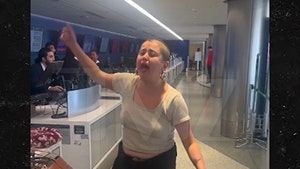
Woman Unleashes Wild NSFW Rant At LAX Workers, But Wrong Terminal

Guess Who This Baby Boy In Overalls Turned Into!

Road Rage Fight Breaks Out on L.A. Freeway After Minor Fender Bender
Video shows brawls and trash at orange crush spring break event, spring breakers can't stop brawlin', trash the ocean.
Spring Break reached rowdy new heights outside Savannah, GA ... as several violent fights broke out, despite increased police presence.
Thousands flocked to Tybee Island this past weekend for the annual Orange Crush gathering ... and it didn't take long for chaos to ensue. Videos from the party weekend show countless intoxicated attendees doing everything from littering to fighting.
Check it out ... a group of women are seen wailing on each other, with one fighter ripping the bathing suit top off another. Few intervene in the brawl ... choosing instead to film the fight on their respective phones.
Partygoers also trashed the island's picturesque beaches ... as large amounts of garbage notably made its way into the ocean after being discarded on the sand.
Heading into the Spring Break weekend, Tybee Island increased its police presence ... with cops stationed at all road points. Remember, Savannah State University severed its ties with Orange Crush in 1991 after violent incidents and a drowning tainted the festival.
The party weekend returned in 2020 ... before taking another hiatus sparked by the pandemic. Now Orange Crush is back -- seemingly wilder than ever ... with tens of thousands of people overrunning the 3-mile island.
Waiting for your permission to load TikTok Post.
Major Bob Holley of the Georgia Department of Natural Resources tried to paint a more peaceful picture of the weekend. He told WSAV3 ... "We have a little bit heavier of a presence, which gives a little bit of a safer environment for people. I think when there’s a good law enforcement and public safety presence, people can relax and when they can relax things tend to go well."
It seems the major needs to take a peek on social media for a clearer account of what went down.
- Share on Facebook
related articles
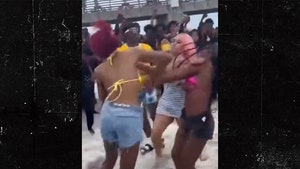
Spring Break Coeds Brawl, Total Chaos on Beach

Spring Break Partiers in Miami Beach Go Wild Violating Curfew
Old news is old news be first.

IMAGES
VIDEO
COMMENTS
Slips vs. Trips. Slips and trips can lead to falls, but there's a pretty clear distinction between the two. ... As you can see, slip hazards can be found indoors or outdoors. Workplace Trip Hazard Examples. Officially, OSHA's trip hazard height is a quarter inch. Any change in floor level that is ¼ inch or more constitutes a tripping hazard.
Slips, Trips, and Falls Hazards. Slips, trips, and falls can result in severe and life-changing injuries, and unfortunately, they can even be fatal. To give you a comprehensive idea, here is a list of the most frequently occurring injuries associated with slips, trips, and falls hazards:
A fall can end in death or disability in a split second, but with a few simple precautions, you'll be sure stay safe at home and at work. The second leading cause of unintentional injury-related death is falls, resulting in 42,114 deaths at home and at work. Depending on the industry, falls can be the leading cause of death at work.
Slips, trips, and falls have far-reaching effects, affecting individuals and society. Personal i njuries range from minor cuts, bruises, sprains, and abrasions to fractures, dislocations, and head injuries (National Safety Council, 2021). The medical expenses associated with treating STF-related injuries can be substantial, including hospital stays, surgeries, rehabilitation, and ongoing care ...
Many different types of assistive devices can help prevent falls or trips. They can also reduce a fall's severity or complications if any happen. Assistive devices for fall prevention can include: supportive tools while up and about, such as: canes; walkers; transportable seaters; grab bars or rails in areas such as: doorways
5. Block off temporary trip hazards. Use barricade tape, cones, and other floor safety products to restrict access to areas that present temporary slip, trip and fall hazards. 6. Mark out clear passageways. Use floor marking tape to show where walkways are and that these areas should be kept clear.
Workplace injuries from slips, trips and falls result in more than 260,000 missed workdays a year. The average worker misses 11 days of work following such injuries. And these injuries cost employers an average of $20,000 per incident, according to EHS Today, a trade magazine for environmental health and safety professionals.
Falls can result from a slip or a trip when a person's center of gravity is shifted and balance is lost. In addition to slips and trips, other causes of falls to look for in the workplace are: • Obstructed view (e.g. carrying large items) • Not paying attention to the surroundings • Not using appropriate equipment (e.g standing on a ...
Download a Slips, Trips, and Falls toolbox talk pdf. Slips, trips and falls are a common reason for many of the injuries in workplaces. They can cause minor injuries but can also lead to serious, long-term injuries. Many slip, trips and falls are avoidable and there are usually easy solutions a workplace can apply to control the risk, either by ...
Housekeeping. Good housekeeping is the first and the most important (fundamental) level of preventing falls due to slips and trips. It includes: cleaning all spills immediately. marking spills and wet areas. mopping or sweeping debris from floors. removing obstacles from walkways and always keeping walkways free of clutter.
A stumble down a stairway. A trip over an uneven surface. Slipping on the ice. It can lead to a variety of regrettable events ranging from a simple bruised shin to an extremely serious injury. It's just one of a number of conditions and situations that set the stage for slips, trips and falls in the workplace. According to the U.S. Department ...
Importance. Slips, trips, and falls are common workplace accidents that can lead to injuries and financial losses for businesses. Most commonly, this training aims to protect lives and comply with safety regulations such as the Occupational Safety and Health Administration ().Proper safety training helps organizations identify and prevent hazards, which protects both of its employees and helps ...
Falls Are Serious and Costly. One out of five falls causes a serious injury such as broken bones or a head injury. 4,5. Each year, 3 million older people are treated in emergency departments for fall injuries. 6. Over 800,000 patients a year are hospitalized because of a fall injury, most often because of a head injury or hip fracture. 6.
If the hole is large enough, you could fall in, thus risking more than a minor injury. Provide proper lighting to ensure visibility so you don't trip on what you cannot see. Use fall protection in the form of guardrails and personal protective equipment so that a person cannot fall over an open exposure, even accidentally. Falling from ...
Slips, trips and falls can happen in any workplace. They can occur at the entry of a building, in the kitchen, in cold rooms, on loading docks and even as you walk outside the building. More serious slips or trips together with the resulting falls may result in: • sprains or strains • broken bones when trying to break the fall
Slip, Trip and Fall Hazards. Slips, trips and falls can happen in any workplace, and should not be overlooked. They can cause: Minor injuries such as sprains and strains. Broken bones due to the impact when trying to break the fall. Back injuries due to the impact from the fall. Cuts if the incident occurs near sharp objects.
Slip, trip and fall hazards Some things that can cause you to slip are: the wrong footwear polished, wet or greasy floors. In most cases, people trip on low obstacles that are hard to spot, such as: uneven edges in flooring loose mats open drawers untidy tools, or electrical cables. Falls can result from a slip or trip, but many occur from low ...
1. Protect your head. The most important body part that you need to protect in a fall is your head. [1] Head injuries can be very serious, even deadly. Make sure you prioritize protecting your head as you fall by properly positioning it. [2] Tuck your your chin down, lowering your head.
How to Prevent Employee Injuries From Slips, Trips, & Falls. Employee injuries can be costly to a company. Here are five steps your business can take to minimize workers' risks: 1. Create a Slips, Trips, and Falls Risk Assessment Plan. The first step is to understand that housekeeping and maintenance are an integral part of safety.
Who can be held responsible for trip and fall injuries depends on where the accident occurred. Municipalities are generally responsible for maintaining sidewalks and streets in a reasonably safe condition. A pedestrian may trip over rebar, or a metal stake that is protruding dangerously out of the sidewalk. If the rest of the sidewalk is in ...
In trip and fall accidents, you tend to fall facedown. While slip and fall accidents tend to send you falling backward. So if you're claiming a hip injury because you tripped and fell, it doesn't exactly add up. I mean, if you're falling forward, you'll likely hurt your face or arms more than your hips.
When you know the causes of slips, trips, and falls, it becomes easier to avoid them and you can even prevent them from happening to others. Take a look at these common triggers of slips, trips ...
The steps varied in height, causing the person to trip and fall, resulting in an ankle sprain and arm injury. On March 13, 2023, a person was ascending the steps at the entry of Bldg. 70A. Their trailing foot caught the edge of the top step, causing them to fall forward. The fall led to their shoulder impacting a glass door, which broke.
In legal terms, "trip and fall" describes a different type of incident with a different type of injury. The differences can change your legal claim. Slip and falls are caused by slick surfaces and victims usually fall backward. Trip and falls are caused by obstacles that trip up a person and make them fall forward or to the side.
Opened in 2021, the state-of-the-art facility features 10 treatment rooms where you can enjoy a variety of signature and customized treatments, as well as a full-service salon.
Additional routes in popular parks now require reservations, the annual pass gets a big change, Juneteenth is now a new free entrance day and more changes for 2024. By Lauren Matison In 2023, the ...
The center is open from 8 a.m. to 4 p.m. Thursday through Sunday, and you can borrow a free pair of binoculars (as well as a birding guide, backpack and other gear) to help you spot the 140 ...
Heading into the Spring Break weekend, Tybee Island increased its police presence ... with cops stationed at all road points. Remember, Savannah State University severed its ties with Orange Crush ...
Pack Up + Go's average price for a plane trip for two people for four days and three nights is $2,700, Rafson says. That includes airfare, accommodations, a guaranteed activity, dinner reservations and recommendations. If any budget is left over, it goes toward other activities. Train or car trips start at about $1,000 for two nights.